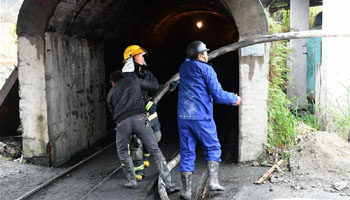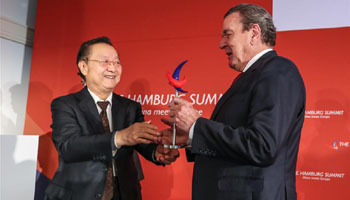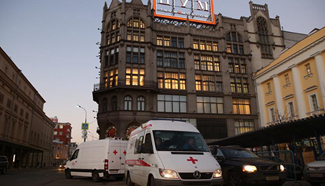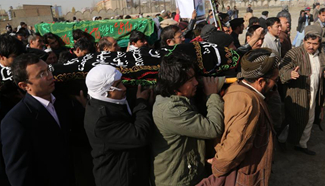LOS ANGELES, Nov. 16 (Xinhua) -- Undoubtedly, Los Angeles, Honolulu, San Francisco, Denver and many other cities in the United States have witnessed the historical contribution that Dr. Sun Yat-sen (1866-1925) -- forerunner of the democratic revolution -- had made towards China.
Born in 1866 in south China's Guangdong Province, Sun is also hailed as an instrumental player in overthrowing the Qing Dynasty (1644-1911) and ending feudalism in China.
HONOLULU
After a few years of schooling in China, Sun went to live with his elder brother Sun Mei in Honolulu in 1879, and enrolled at the local Iolani School.
During his study in Hawaii, he absorbed the Western ideas and developed his personal views, before embarking on the road of revolution.
His Iolani classmate Zhong Gongyu recalled in an article, published in the New York Sun in 1932, that Sun Yat-sen, at that time, often aired discontent towards the corrupt Qing Dynasty.
"Why the Qing emperor, in the name of the Son of Heaven, looked down upon the people as if they were bugs?" Zhong quoted Sun as asking one evening.
In 1883, Sun was sent back to China by his elder brother. In 1894, Sun returned to Hawaii, where he founded the Revive China Society, the first revolutionary party in modern Chinese history, through which he led the democratic revolution in China.
In memory of Sun, Zhong's offspring erected a statue of the great man at the Iolani School. Out of respect, local children often lay wreath on Sun's statue.
LOS ANGELES
Charles Beach Boothe, the then mayor of South Pasadena, invited Sun to stay in his mansion in Pasadena for several weeks to plan the revolution with Homer Lea and other U.S. generals. Sun had appointed Booth as the sole financial attorney in the United Sates to raise financial support for the revolution.
When Sun was a guest in Booth's mansion in the east of Los Angeles in 1910, he planted a sycamore tree and a magnolia tree and named them "Chinese Republic" and "Destroy the Qing" respectively, as an expression of his revolutionary determination. The trees are still standing there to tell visitors of that part of the history.
Booth's mansion has turned into the Oneonta Congregational Church. Judith Alonso, campus administrator of the church, told Xinhua:
This place "is part of history. He (Sun Yat-sen) is so important to so many people, who love democracy. We are so proud that history is here".
"In my heart China has a special place and that is because of Sun Yat-sen," Alonso added.
DENVER
When China's revolution erupted in 1911 to overthrow the imperial Qing Dynasty, Sun Yat-sen was in Denver, Colorado.
"He read about the breakout of the revolution he started in the Rocky Mountain News when he was at the Brown Palace Hotel in Denver," a retired history professor in Denver John Yee told Xinhua, "As soon as he heard (the revolution), he rushed back to China, and was named the first president of the country."
According to Yee, Sun came to Denver to get funding for his uprising.
"You need money to finance a revolution," said Yee, "Sun Yat-sen knew Denver's Chinatown was filled with hard-working successful Chinese people who would help."
"Thanks to Sun Yat-sen, the Chinese people rose up and overthrew the corrupt Qing," Yee said, adding that "It ended imperial rule in China forever."
In the eyes of the 95-year-old Yee, who had worked as a translator for the Flying Tigers -- a volunteer group composed of U.S. pilots -- in China's Kunming City against the Japanese invaders, Sun was China's "George Washington."











